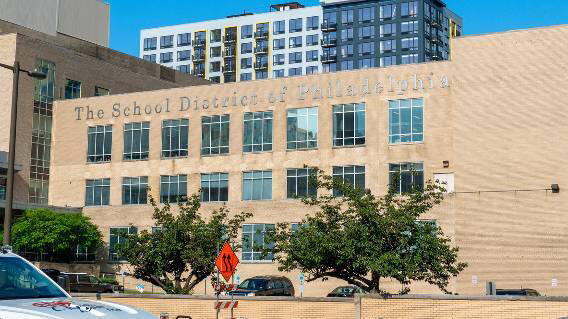Philadelphia City Council Threatens To Halt School Funding Over Asbestos

No plan, no more money. That’s the Philadelphia City Council’s message to its school district leadership following the recent closure of two schools because of asbestos issues.
Asbestos contamination is an ongoing and large-scale issue in Philadelphia’s aging school buildings.
“We’re not going to just give you funding if you’re not going to give us a plan,” Philadelphia Councilmember Anthony Phillips said at a recent news conference.
Council members put pressure on the district to provide a detailed and definitive plan to fix the toxic issues.
Philadelphia’s Education Committee Chair Isaiah Thomas said the school district continues to ask for more funds for public education. But it hasn’t provided a plan for how it will fix the physical and structural issues in its buildings.
“The recommendations we make and suggestions that we give, not saying they don’t listen to all of them, but far too often, the important ones fall on deaf ears,” Thomas said.
The school district is the only one in Pennsylvania that does not control its tax rates. Instead, it relies on funding from city hall and the state capitol to operate.
Schools Shut Down Due to Asbestos Issues
Two Philadelphia schools were shut down in March after inspections found toxic material in the buildings. One of the schools, Simon Gratz High School Mastery Charter located in the largely Black neighborhood of Nicetown-Tioga, was cleared to reopen just days later, but parents remain concerned about asbestos exposure.
“Thankfully there is testing, but the aftereffects? How many people are going to know it was affiliated with asbestos?” asked Danielle Mitchell of Nicetown-Tioga in an interview with WPVI-TV, an ABC affiliate in Philadelphia.
That school was built in 1925. It has already undergone one major renovation to remove asbestos, according to the Philadelphia Officer of the Controller database that tracks the nearly 2,300 asbestos abatement projects at the schools. A minor removal project at the school is slated to be completed by the end of March, according to the Asbestos Projects in the Philadelphia School District database.
Exposure to asbestos fibers can cause a range of illnesses, from a cancer called mesothelioma to chronic obstructive pulmonary disease.
Parents can educate their school-age children about the dangers of asbestos exposure at school and how to identify products that could contain the toxic substance. Asbestos is commonly found in floor and ceiling tiles as well as insulation applied to pipes, boilers, walls and ceilings of schools erected before 1980.
Funding To Remediate and Repair Asbestos-Filled Schools Could Reach Billions
The Philadelphia Inquirer published an investigation in 2018 about the environmental hazards inside the city’s schools. At the time, school officials estimated it would cost billions of dollars and take a decade to fix the issues.
Five years and several million dollars later, the school buildings are still in disrepair.
Approximately 80% of Philadelphia’s schools were built prior to 1978, a time when asbestos products were widely used in building materials such as adhesives, cement, roofing shingles, insulation, floor tiles and plumbing.
Pennsylvania Gov. Josh Shapiro recently proposed setting aside $100 million over five years to help fund school improvements across the state. City and state officials said it would cost billions to fix the schools in Philadelphia alone.
The current city budget allocates $1.3 billion in city taxes for school funding and provides another $270 million in the form of a grant.
“At the end of the day, a society is judged by how we treat our most vulnerable and that’s our elderly and our children,” Thomas said.
Public hearings about school funding will be held in May.